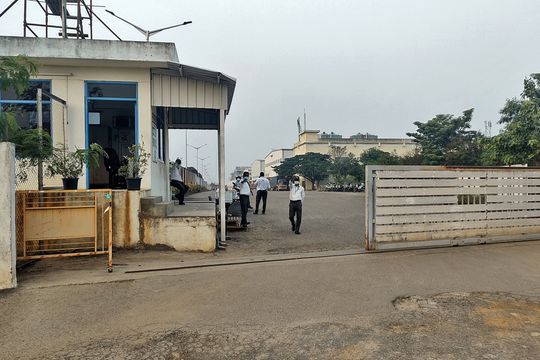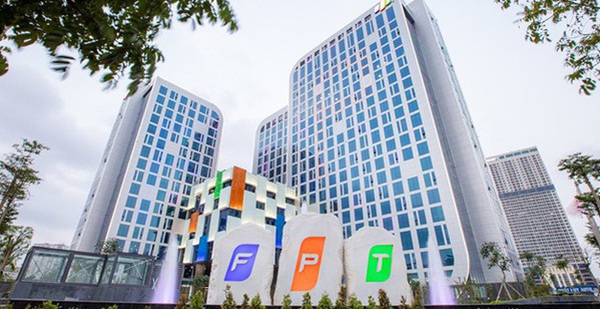Why keep ‘staying in place’?
Most of Apple’s products are now mainly assembled in China – something that has given the giant a headache in recent years. According to multiple sources, the tech giant is considering expanding production elsewhere, limiting its reliance on China. The WSJ recently named India and Vietnam on the number one and number two priority lists of the Cupertino-based company.
Apple has the potential to do that, but why is progress so slow?
Setting up its supply chain headquarters in China used to be the pride of Apple, but now it has turned into the biggest worry
Apple wants to tell the world that its supply chain is global and that it doesn’t depend on China. However, the fact that Apple is extremely dependent on the world’s most populous country and this complicated relationship has caused the company, investors and consumers headaches in the current context.
In the announcement of Apple’s second quarter financial report (quarter ended at the end of March 2022) in early May, Apple warned that a supply shortage – largely due to China’s shutdown because of Covid-19 – will The company lost $8 billion in revenue. This is equivalent to the company’s entire iPad sales in 1 quarter.

The isolation in many localities of China has cost Apple billions of dollars.
During the meeting, CEO Tim Cook once again affirmed that Apple’s supply chain is “true global” with products manufactured everywhere, including the US. However, more than 90% of its products including iPhone, iPad and MacBook are made in China.
Tim Cook also hinted that Apple is looking to ramp up manufacturing operations out of China. “We continue to look at optimization.”
Currently, many Apple product components are manufactured outside of China. Components for iPhone, iPad, Mac and other products are made around the world, from the US, to India, Vietnam, to Japan.
But the real bottleneck in production is the assembly process (FATP for short). Most Apple devices go through the FATP process in China. That’s why your MacBook Pro, iPad, or iPhone is marked “Assembled in China”.
This is a model pioneered by Tim Cook, which centralizes assembly at one point while components are shipped from around the world. For decades, this approach has allowed Apple to benefit from low-cost labor and supportive government policies — while also reaching Chinese consumers.
But now, Apple is greatly influenced by this very preeminent operating system. Many Chinese factories closed because of Covid-19 resulting in slower assembly of Apple devices, less inventory, and lower sales.
If this were to happen only once, it would be easy for Apple to “live with the flood” for a while, make some tweaks, and then move on. But the reality is that Apple’s strategy of assembling products in China has been problematic for years — even before the pandemic hit.
– In 2019, Apple announced third-quarter revenue that was lower than expected, affected by the supply chain.
– US-China tensions under President Trump cause Apple products to be subject to tariffs when they are made in China and shipped back to the US.
When the pandemic hit in 2020, a wave of factory shutdowns hit Apple once again. The discontinued products include iPhone SE and iPhone 12.
In 2021, Apple says chip shortages and other supply constraints cost it billions of dollars
– In 2022, the factories of Foxconn and other assembly partners – in addition to chip shortages and the Russia-Ukraine conflict – could wipe out Apple’s $4 to $8 billion in revenue for the quarter ended in 2020. June.
The will of CEO Tim Cook
However, despite China’s obvious negative impact on the company, Tim Cook has defended the manufacturing strategy he built.
“When you really evaluate and see how the supply chain has worked. You see it’s very flexible,” Cook said. He noted that many major consumer electronics firms have been struggling with chip shortages while Apple has “done a good job in tough times”.
That assessment is, of course, fair. Apple was still able to generate nearly $80 billion in revenue from hardware products in the second quarter, and an estimated $62 billion in revenue in the current quarter. But $8 billion is still $8 billion, and Apple needs to find solutions.
Recently, a number of new versions of Apple’s mac Studio have been assembled in Malaysia, the iMac M1 is made in Ireland and Thailand, and the AirPods are made in Vietnam.
But its most important devices – the iPhone, iPad and Apple Watch – are still mainly made in China. Apple has been trying to expand some of its iPhone assembly operations – including assembling the iPhone 13 in Brazil. They also move some iPhones to assemble in India, but the number of iPhones produced outside of China is not really significant.
According to reports, Apple only produced 1 million iPhone units in India in the first quarter of 2022 – the period in which it is estimated to have sold 60 million units.
There is no indication of how long the current problems in China will last, and even if they are resolved quickly, it always seems that there will be a new problem to be solved. Apple needs to work with existing manufacturing partners — or find new ones — to set up more factories in India, Thailand, Ireland, Brazil, Vietnam, or even the US to diversify its installations. final assembly of its products.

A Foxconn iPhone assembly plant in India.
Cook has long insisted that assembly is a priority in China, largely due to low labor costs and high manufacturing skills. Moving the assembly chain out of China could hurt the company’s bottom line. This means that Apple can continue to accept the risk factors it has been taking.
Last week, Apple expanded its stock buyback program by $90 billion and increased its shareholder dividend. Looking at it, experts again “wish” Apple poured this money into creating a newer global assembly chain – or even promoting highly automated production.
Tim Cook also received many suggestions about bringing iPhone and iPad production back to the US. They even work on making their own modems, battery technology and displays. With $200 billion in cash and seemingly limitless profits, building new supply chains may not be a problem for Apple. The question is whether they are determined to do it or not.
at Blogtuan.info – Source: cafebiz.vn – Read the original article here



